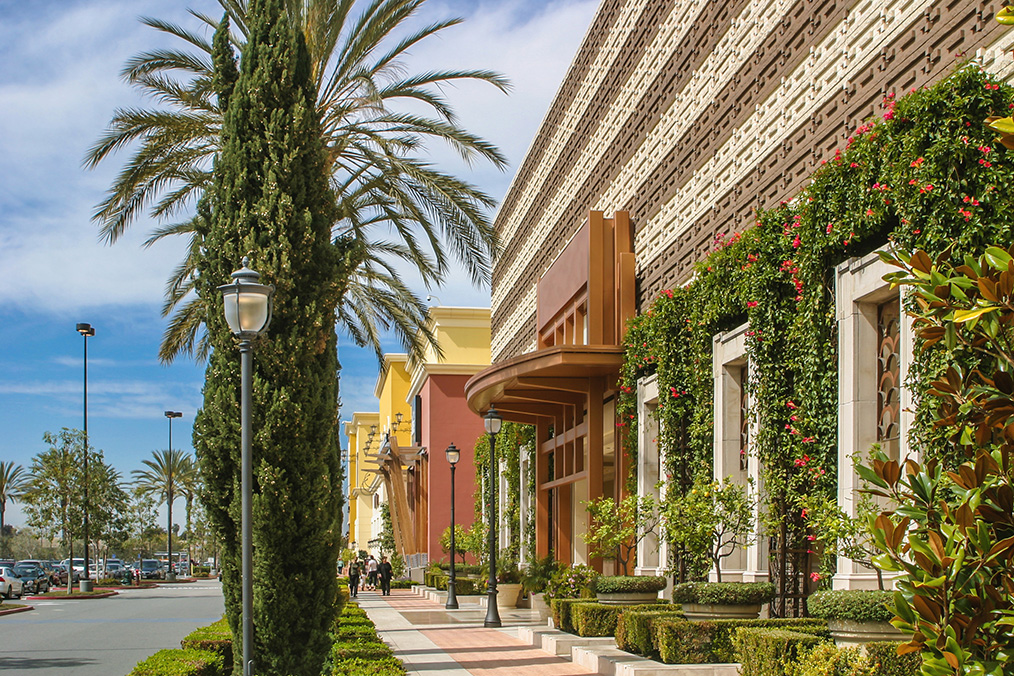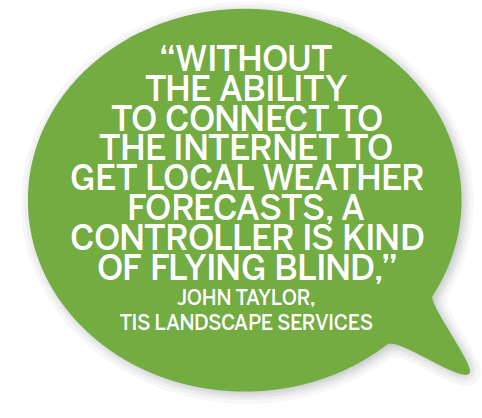
How Smart Water Management Systems Reduce Water Use at Retail Stores
Facilities managers who want to reduce their stores’ water consumption should think outside the box – literally. When looking for ways to reduce retail water use, it may seem like a no-brainer to start with indoor facilities such as restrooms, but according to South Bend, Ind.-based Springwise Facility Management Inc., landscape irrigation is the main culprit driving up stores’ water bills.
An analysis by Springwise found that landscaping accounts for 37 percent of retail stores’ water use, compared with 27 percent for restrooms, 21 percent for cooling systems, 4 percent for kitchen facilities, and 11 percent for other purposes. Simply put, an inefficient landscape irrigation system pours money down the drain, and with more municipalities and states — especially in the drought-stricken Southwest — restricting water use, wasteful irrigation practices are coming into sharper focus for retail stores.

“For retail facilities, water conservation is extremely important because the cost of water is going up significantly,” said John A. Taylor, President and Chief Executive of Houston-based TIS Landscape Services, which installs sustainable landscape environments. The reasons for that range from drought to problems with infrastructure such as significant leaking.
“With the price of water being sky-high, monitoring your consumption of water is incredibly important. And given the fact that irrigation is what consumes the most water, if you’re going to make a dent in your water consumption, that means making a dent in your water bill, then the place to start is irrigation,” Taylor explained.
TIS Landscape Services installs smart irrigation systems such as HydroPoint’s WeatherTRAK irrigation controllers that water based on each store’s site-specific conditions. The smart irrigation controllers monitor the rate of evaporation and transpiration – the usage of water by plants – in each store’s location and download local weather forecasts, ensuring sprinklers aren’t turned on the day after significant rainfall or when rain is expected in the near future.
The constant monitoring of soil and plant conditions allows stores to eliminate the wasteful practice of watering every few days for a set amount of time regardless of weather conditions. That, combined with the installation of plants that require less water to thrive, can greatly reduce retail water use.
“Without the ability to connect to the Internet to download local weather forecasts, a controller is flying blind,” Taylor said. “It’s watering based on what it knows to be true right now, and obviously that can change in a heartbeat. When we go out and audit sites, very rarely do you find someone who’s underwatering. They’re almost always overwatering, and most of the time, people are overwatering by 200 or 300 percent, so monitoring the moisture in the ground and replacing only what’s needed is a huge step toward conserving water.”
Smart irrigation controllers also can be operated and used to run diagnostics and generate water-usage reports from centralized, remote locations, enabling facilities managers to easily keep tabs on several stores at once. The WeatherTRAK Central and WeatherTRAK Mobile cloud-based applications, for example, allow facilities managers to control one or thousands of smart controllers from anywhere in the world using their computers or handheld devices.
The diagnostic reports can be especially useful, Taylor said, because most sprinkler systems run at night when no one is there to see them operate, so a malfunctioning system can go unnoticed for a long time.

Taylor said smart irrigation systems can reduce a retail store’s water use by more than one-third, allowing the store to recoup its investment in system upgrades within three years. Additionally, since the No. 1 killer of plants is overwatering, stores can avoid the costly loss of landscape and soil erosion that can stem from consistent overwatering. He said retail stores should start by hiring a landscape contractor to perform a water audit, which can identify the best ways to reduce consumption.
Smart irrigation systems and other products such as HydroPoint’s WaterCompass leak-detection and water-flow monitors, which attach to a store’s water meter, can pay big dividends for retail stores over time, said Jim Boggs, Business Development for Austin, Texas-based Facility Solutions Group, a single-source provider of facility management solutions. Flow monitors can establish water-usage benchmarks for a particular store and a portfolio of stores, which can allow facilities managers to detect anomalies such as leaks and address them quickly. FSG’s Clarity system takes advantage of both the WeatherTRAK and WaterCompass cloud integration module to allow portfolio owners to utilize their existing building management system for a single-user interface in addition to HVAC and lighting controls.
“What we see with customers is that it’s the one site that, pays for the deployment across all 100 stores,” Boggs said. “Some commercial campuses are so large that you can have a main line leaking 24/7 and not know it for eight, 10 or 12 months. Leak detection is not just about water costs, it’s really about damage and liability too, and that’s where you get your big return on investment in terms of cost avoidance. If a main line or lateral line breaks, you’re looking at potential slope failures and slip-and-fall incidents because you have a lot of water going to places where it’s not supposed to.”
For retailers, reducing water use also can have benefits from a public-relations standpoint. Environmentally conscious consumers feel good about shopping at retailers that minimize their impact on the environment – and they may punish those that don’t.

“I think you get in trouble with the public when it’s raining, and your sprinkler system is going,” Boggs said. Similarly, hosing down sidewalks as a matter of routine instead of necessity is a wasteful practice that can also increase the risk of a costly slip-and-fall accident. As for reducing water usage in the store itself, facilities managers can consider several options.
- Each waterless urinal can save up to 40,000 gallons of water annually, according to restroom fixture manufacturer Sloan. The urinals have a replaceable cartridge barrier to trap odor. Additionally, low-flow toilets typically use 1.3 gallons of water per flush or less, about two to three times less than other toilets.
- Faucet aerators, which limit the maximum flow rate of water from faucets, also can save thousands of gallons of water each year, and automatic faucets with electronic proximity sensors limit water usage to a few seconds at a time and eliminate the risk of a customer or employee leaving a faucet running. Pedal-operated faucets achieve the same goal.
- Single-pass cooling equipment, such as air conditioners and ice machines, can be modified to recirculate water and produce significant water savings. In single-pass systems, water is circulated once through a piece of equipment and then is sent down the drain, so reclaiming that water can make a big difference over time.
This article was written by Nick Fortuna and originally featured in the May/June 2017 issue of Retail Store Maintenance – the official publication of the Professional Retail Store Maintenance Association (now known as Connex).

